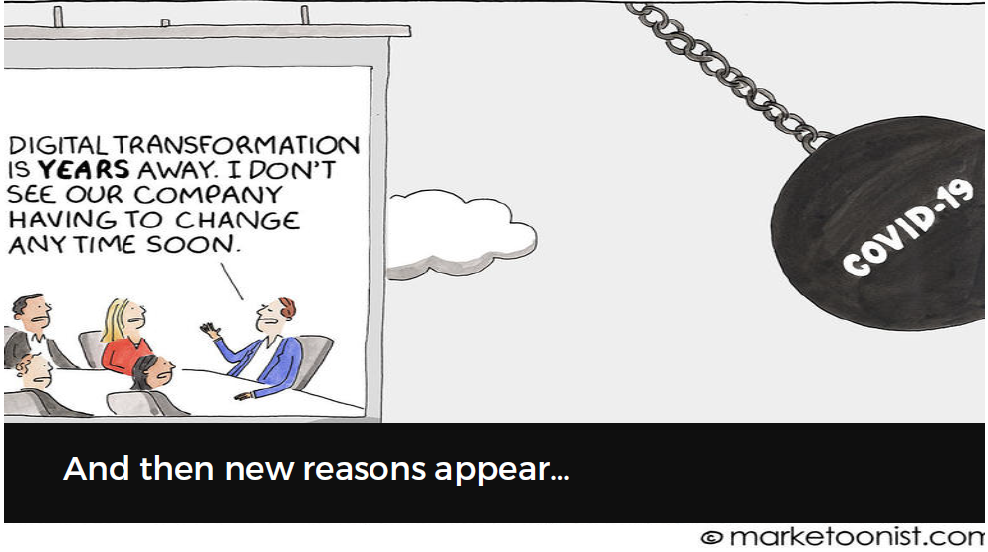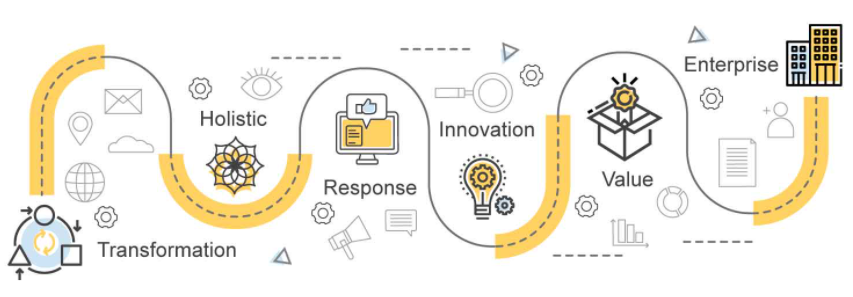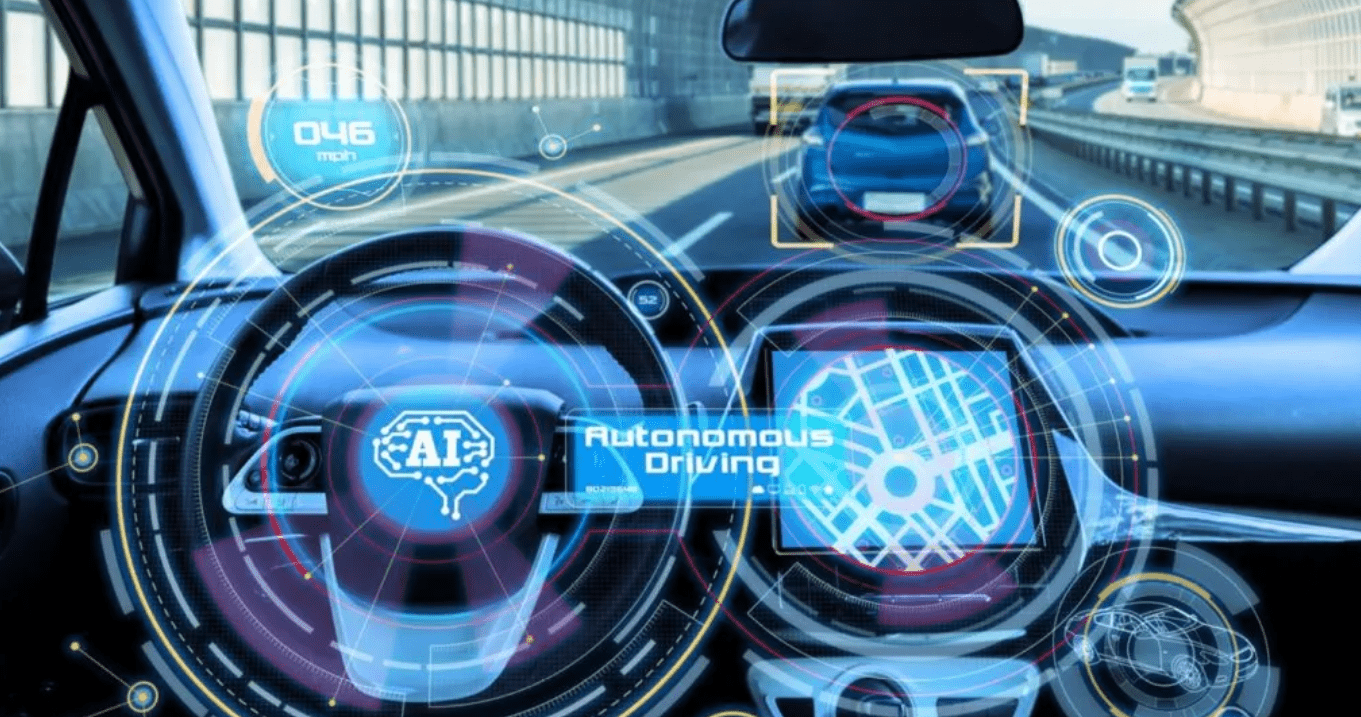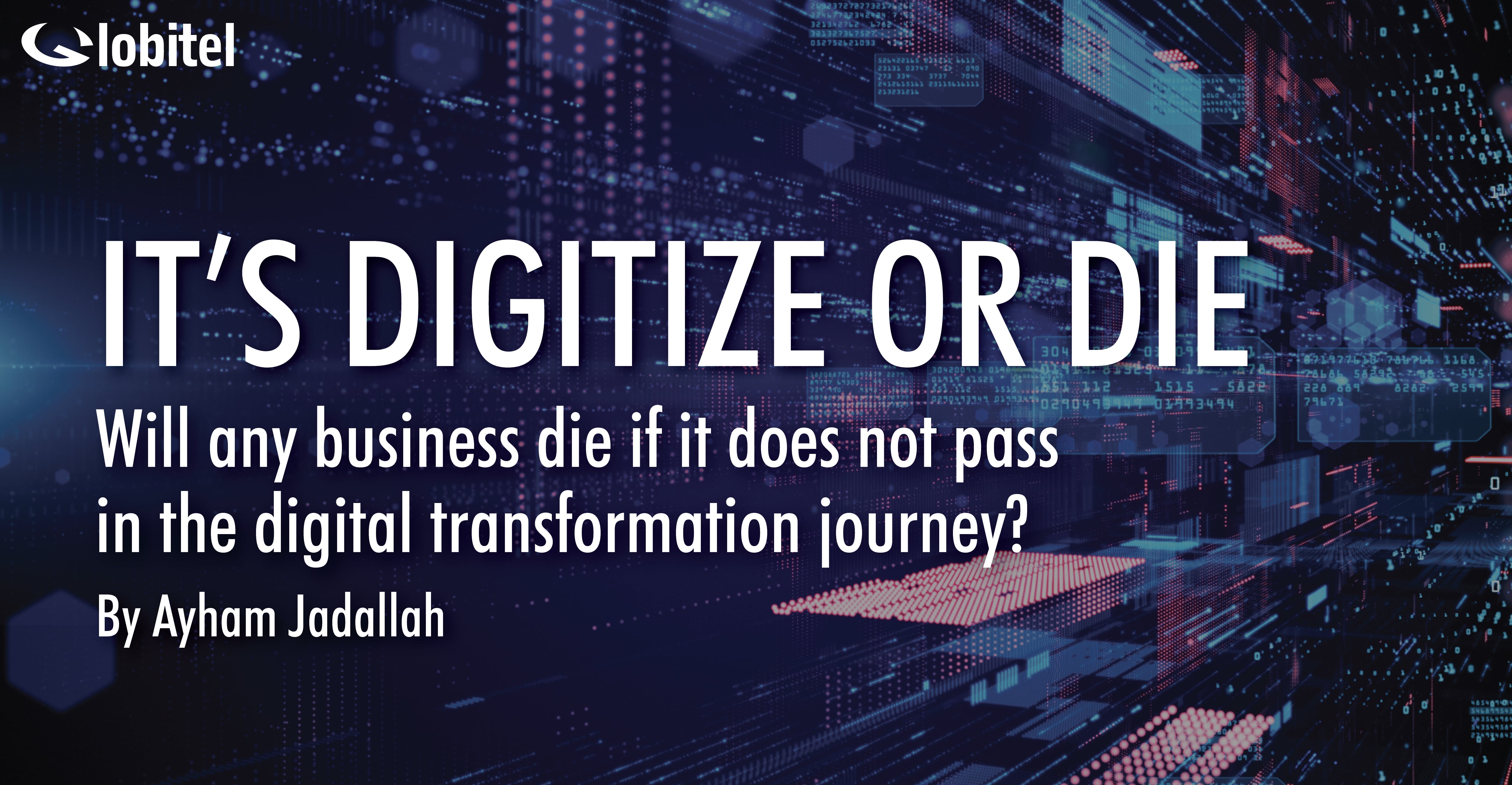Digital Transformation has become the mantra for many businesses big and small in the last few years with the Covid19 pandemic accelerating such transformations for many organizations. Competitive pressures, higher customer expectations, and prospects of revenue growth are the key drivers for many of these digital initiatives. Various emerging technologies such as Cloud Computing, Machine Learning, Artificial Intelligence, Internet of Things (IoT) and Blockchain are key contributors to these digital transformations.
The onset of the digital era leaves no room for businesses to ignore new digital trends. Digital or die. Then there are options for introducing numbers into traditional business, different in speed, scale and depth. Currently, there are no clear, generally accepted definitions of digitalization and digital transformation terms.

Digitalization is any introduction of digital technologies. The depth and scale of implementation may vary, but in general, and most importantly, digitalization will allow you to increase business efficiency by several percent so this saves a lot of money. But digitalization will not allow you to create a gap from competitors. You are left with a traditional product, a traditional production and distribution process. Everywhere there will be more numbers and more efficiency, but not dramatically more than competitors.
Digital transformation is a very deep and large-scale introduction of digital into a traditional business. As a result, there is a gap from competitors and you are several times more efficient. Your product cannot be compared with an ordinary one, it is much more interesting for the consumer. Your production and sales are several times more efficient. This was addressed in the well saying of Jeff Bezos | Amazon founder “In today’s era of volatility, there is no other way but to re-invent. The only sustainable advantage you can have over others is agility, that’s it. Because nothing else is sustainable, everything else you create, somebody else will replicate.”
70% of digital transformations have failed as per McKinsey. The key reason why enterprises are failing in their digital transformation journey is that there is no standard framework existing in the industry that enterprises can use to transform themselves into digital. There are several sources that speak about technologies such as Cloud, Artificial Intelligence and Data Analytics, but very few of these provides a holistic view on how enterprises can go aboard on a digital transformation journey and be successful using a combination of these technologies. CXO transform provides THRIVE (Transformation, Holistic, Response, Innovation, Value and Enterprise), the six superior principles of digital business transformation which may be the ground rule for any transformation journey.

Principle 1: TRANSFORMATION Change is not enough. Organizations must recognize the difference between change and transformation and allocate their best people to transforming themselves.
Principle 2: HOLISTIC From strategy to roadmaps, and execution to people, leaders need to consider the big picture and not limit their focus to isolated transformation components.
Principle 3: RESPONSE Organizations must respond strategically to opportunities and threats they are presented with internally within the company and externally in the market.
Principle 4: INNOVATION Only through the innovative convergence of digital technologies can companies truly transform with new business models and ways of working.
Principle 5: VALUE Value drivers need to steer the transformation purpose, which in turn will provide value to stakeholders inside the organization and customers.
Principle 6: ENTERPRISE Transformation must encourage, embrace and educate people across the enterprise and build a collaborative culture of new capabilities and mindsets.
In order to understand which digital transformation strategy is optimal for your business, you need to closely monitor digital trends, competitors’ actions, organize an investigation of startups and technological solutions in your industry. The work must be implemented, there is no alternative. But the plan for this work should be based on an understanding of the digital environment and a willingness to continually adjust this plan as information becomes available about new and more impressive digital technologies. Let us link the digital transformation into 4 Sectors.
Case#1 Medicine

The radical digitalization of the hospital is the use of robotic surgeons. They have already performed more than 200,000 operations under the control of a remote real surgeon who controls the robot’s arms. Hospitals with robotic surgeons are certainly impressive. They are more successful than traditional competitors, but not dramatically where the robot is still unable to do all operations. When the robot itself does most of the medical manipulations, this can be called a digital transformation of the clinic. It will have more programmers than doctors.
Case#2 Automotive

All car manufacturers are required to carry out crash tests on vehicles. Sometimes, to obtain the required parameters of the body structure, it is necessary to smash dozens of real cars. The use of a digital twin can significantly reduce the number of field tests. You can beat not a real car, but its digital copy, and only the final test can be done on a car from the assembly line. Obviously, this saves money, and most importantly, testing time. For an auto concern, this is digitalization. For a company that specializes in crash tests, this is digital transformation. A competitor without digital twins will spend much more money and time on testing. The digital transformation for the automotive industry is of course self-driving cars. There is a big battle for this prize. Someone will win.
Case#3 Banks

Any large bank has a call center. You don’t have to guess for a long time to predict the massive use of speech recognition and artificial intelligence in a bank’s communication with customers. For a bank, this is digitalization. It will cut half of the operators, replacing simple conversations with robots. But this is not enough to defeat other banks. For a call center service provider, a product based on artificial intelligence is a digital transformation, a regular call center will not be able to compete with it. Blockchain had high hopes for the digital transformation of the entire financial industry.
Case#4 Construction

The most active figure enters the construction industry through design is the new format of the house project is the BIM model (building information model). The model is three-dimensional, all communications are plotted on it. The project can be seen conveniently, in all sections and scales: on a computer in an office, on a tablet at a construction site, in a virtual reality helmet at a presentation, wearing augmented reality glasses, comparing real walls with a drawing. Very convenient and efficient. Construction companies are actively introducing this technology. For them, this is digitalization – having abandoned flat drawings, they build faster and make fewer mistakes. For BIM designers, in contrast, it is digital transformation. Since a three-dimensional model as a product is fundamentally better than a flat drawing, and creating a model with all communications and calculations is much faster than traditional flat design. Construction printers can be a good option for the digital transformation of the construction industry when a robot prints a house. The competition between ordinary builders and a robot is meaningless. The robot is faster.
In a conclusion, digital transformation is a major biller in the digital economy which is one of the main drivers for the growth and competitiveness in different sectors.
Responses
Bara’ Harb (Product Manager at Globitel): As Ayham pointed out, this crisis has exposed some of the vulnerabilities and gaps in many organizations’ resourcing models, talent models, operating models, and ultimately revenue or business models. When we simply observe our local community restaurants as an example; those that have “Digitally Transformed” with online ordering or partnering in an ecosystem with “Talabat” or “Careem Now” have a competitive advantage right now with servicing their clients.
“It is not the strongest of the species that survives, but rather, that which is most adaptable to change” This is what Jeff Bezos meant by “The Agility”, now that we have been forced to think, act, and more importantly enforce a shift in mindset and culture on how we work and lead.
About the Author
Ayham Jadallah is a Program Manager at STC Solutions with more than 13 years of combined experience in Saudi Arabia and the United Arab Emirates. Jadallah has a master’s degree in Computer Systems Networking and Telecommunications from King Fahd University of Petroleum and Minerals. Jadallah has a proven track of solid knowledge and experience in leading programs, engagements, customer success management and building capabilities.


